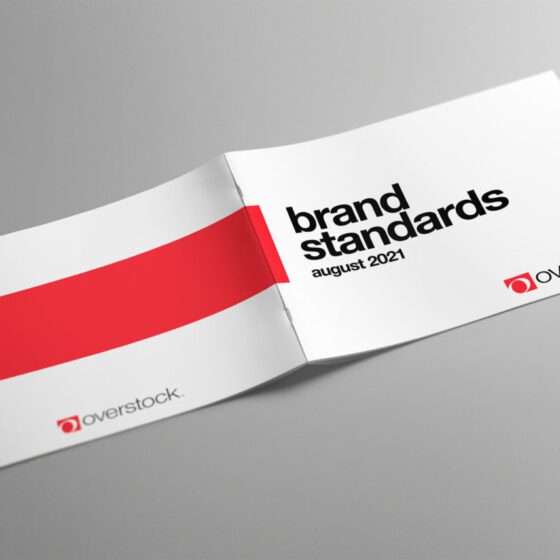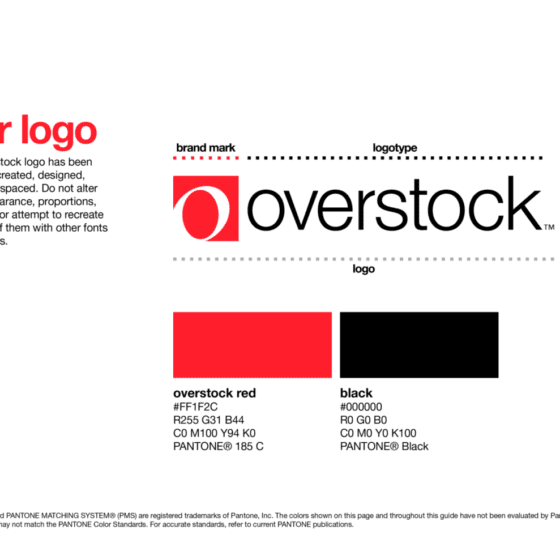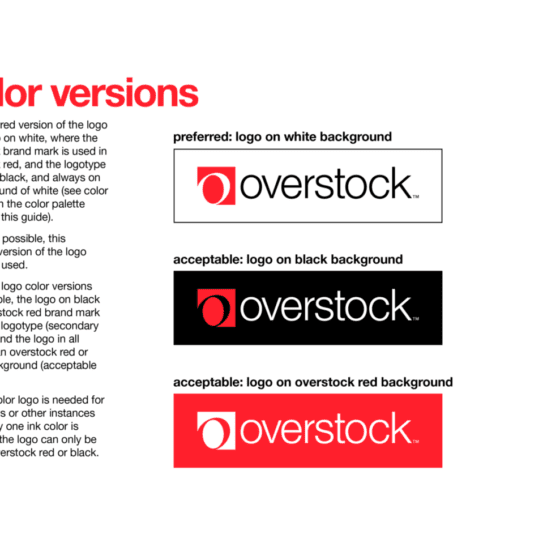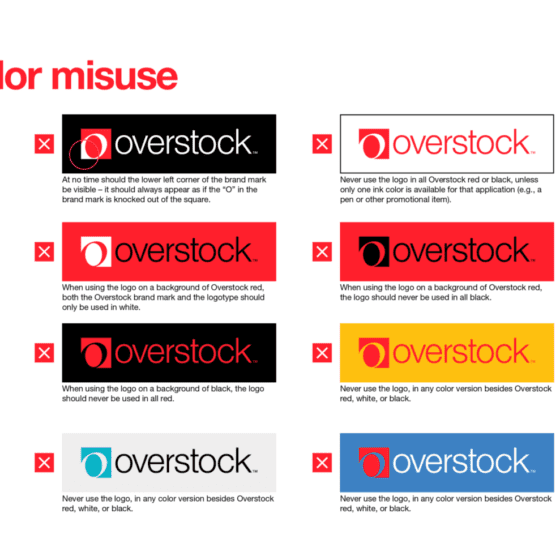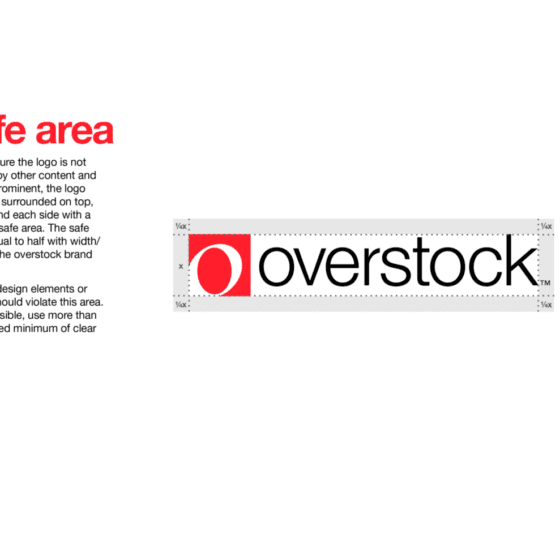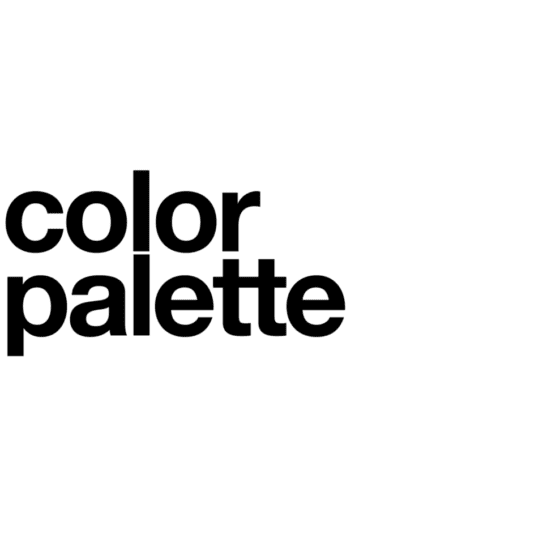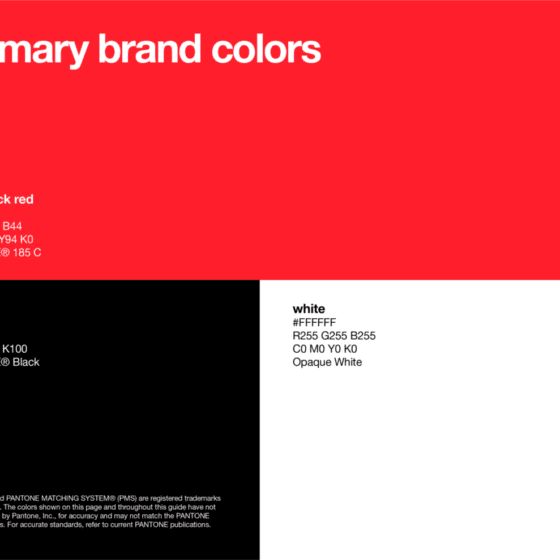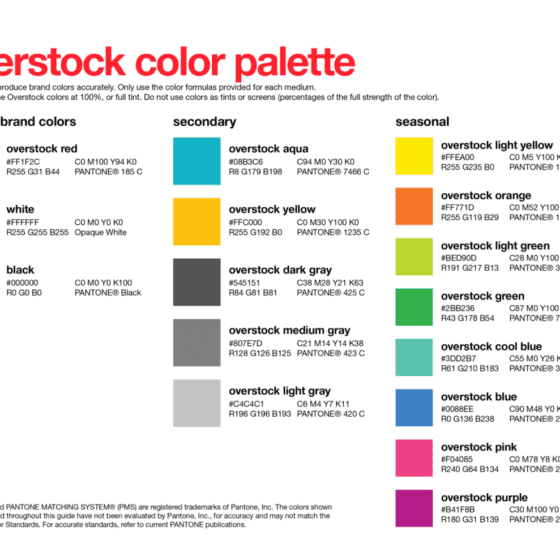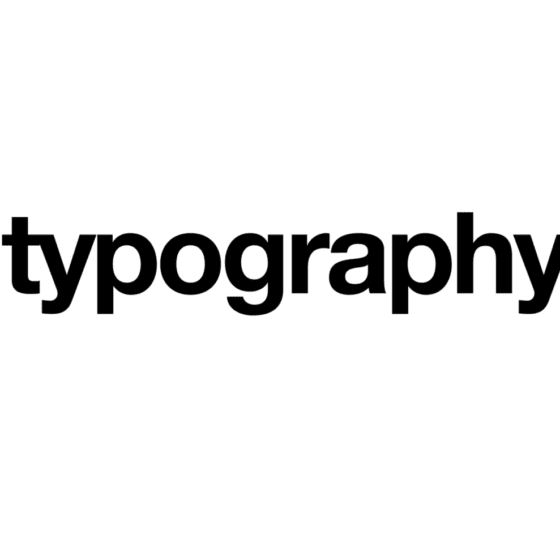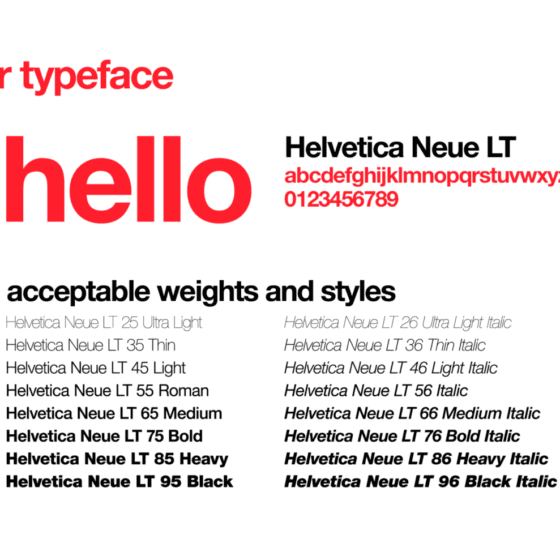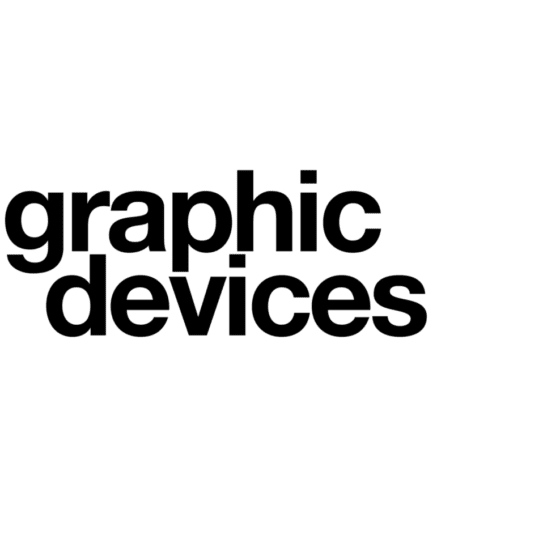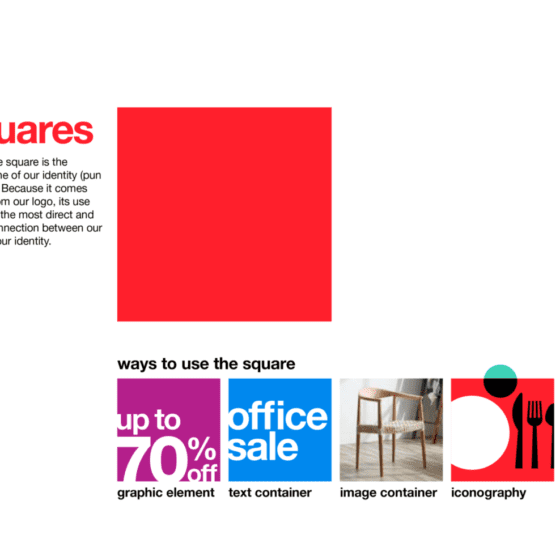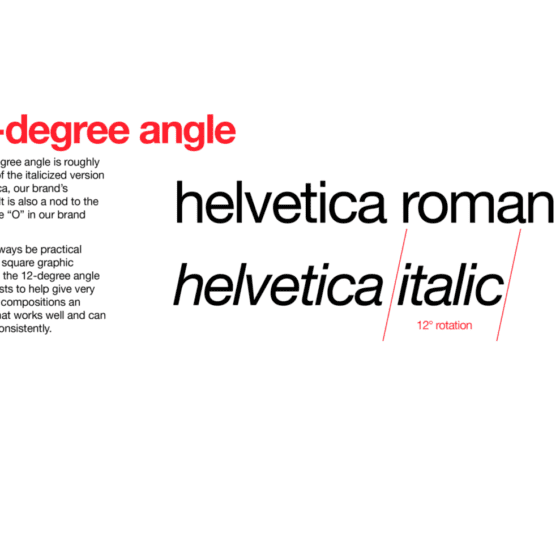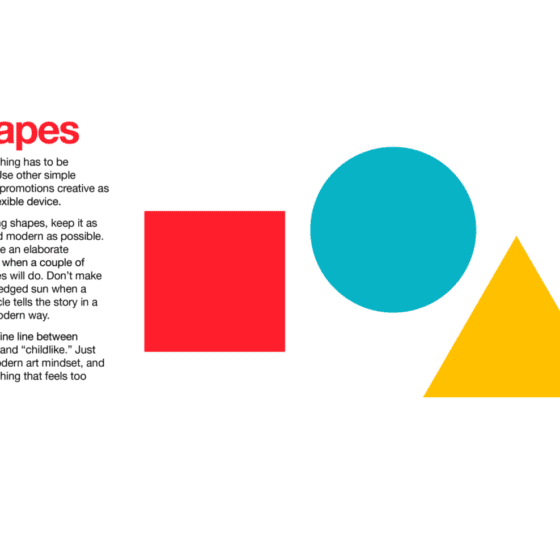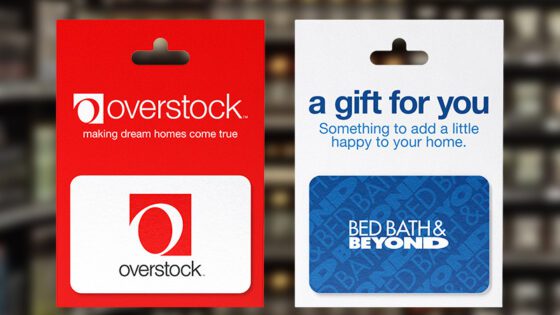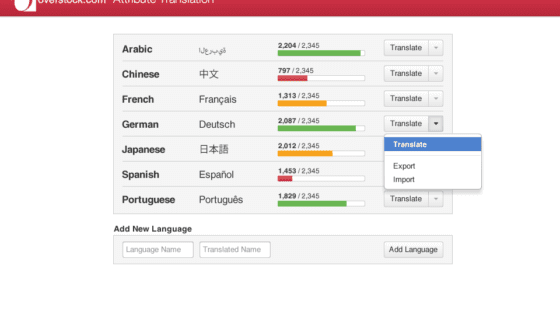Overview
In my role at Overstock.com, I recognized the critical need for a cohesive and consistent brand image across all internal and external communications. Before 2021, the company lacked a comprehensive and up-to-date Brand Standards document, which resulted in inconsistent brand interpretations and varying applications across different departments and third-party vendors. This presented an opportunity to establish clear, unified guidelines that would streamline communication, improve brand recognition, and foster trust with both customers and partners.
As the brand owner, I led the charge to update and refine Overstock’s Brand Standards document, ensuring that it reflected the most current branding elements and effectively communicated guidelines across the organization.
The Challenge
- Lack of Ownership and Consistency: Prior to the 2021 update, Overstock’s Brand Standards document lacked clear ownership, leading to inconsistent interpretations and varying brand applications across departments and third-party vendors.
- Updating Outdated Guidelines: The last update had occurred in 2017, which meant the document needed a comprehensive refresh to account for any new changes in the brand identity, such as logo updates, color palette adjustments, and changes in messaging.
- Need for a Unified Portal: Overstock needed a centralized and easily accessible hub where employees and vendors could access the most up-to-date guidelines and materials to ensure uniformity across all touchpoints.
My Role
As the owner of the brand at Overstock.com, I was responsible for leading the update of the Brand Standards document and ensuring its adoption across the company. My responsibilities included:
✅ Owning the project from start to finish, including conducting audits of the existing materials and gathering feedback from key stakeholders to ensure all branding elements were accurately represented.
✅ Creating a user-friendly portal on the company’s SharePoint platform that served as a central repository for all brand guidelines, templates, and customer research.
✅ Leading the design of the updated Brand Standards document using Adobe InDesign to develop a visually engaging and easily digestible resource that would be adopted by departments and third-party vendors alike.
✅ Ensuring brand consistency across all materials and communications, internally and externally, by providing clear and actionable guidelines for all teams.
✅ Facilitating communication with third-party vendors by offering a streamlined and clear brand reference, ultimately leading to more effective collaboration and reducing brand discrepancies.
Approach & Solution
1. Conducting a Comprehensive Audit
- Strategy: I began by performing an audit of Overstock’s existing brand assets and the previous 2017 Brand Standards document. This allowed me to identify areas where the brand had evolved—whether through new logos, design trends, or shifts in messaging. I also gathered feedback from cross-functional teams to understand where clarity and consistency were most needed.
- Outcome: The audit helped establish a clear foundation for the update and ensured that the new document accounted for all recent brand developments and organizational needs.
2. Creating a Centralized, Accessible Brand Portal
- Strategy: Recognizing the need for a centralized hub, I built an accessible Brand Standards portal on the company’s SharePoint site, which became the go-to resource for all brand-related materials. This portal housed the updated Brand Standards document, templates, logos, and customer research, ensuring that all teams had quick access to the resources they needed.
- Outcome: The portal was designed to be user-friendly, with an intuitive interface that made it easy for teams to find and reference the brand guidelines. This led to improved collaboration and greater consistency in brand application across departments and external partners.
3. Designing a Visually Compelling Brand Standards Document
- Strategy: Using my expertise in Adobe InDesign, I designed a visually appealing and comprehensive Brand Standards document that was both informative and easy to navigate. The document included clear guidelines on logo usage, color palettes, typography, tone of voice, and other key branding elements, making it simple for teams to apply the brand accurately and effectively.
- Outcome: The updated document was easily adopted across the organization. Its clarity and visually appealing design ensured that employees and external partners could quickly familiarize themselves with the brand, leading to more consistent and professional brand executions.
4. Improving Communication with Third-Party Vendors
- Strategy: Another major focus was improving communication with third-party vendors to ensure they understood how to apply the Overstock brand correctly. I incorporated a section in the document dedicated to working with vendors and partners, providing them with clear instructions for applying brand guidelines across various platforms and media.
- Outcome: The updated Brand Standards document served as a valuable reference for third-party vendors, reducing miscommunications and increasing brand consistency across all marketing and product materials.
Results & Impact
✅ Brand Consistency: The updated Brand Standards document provided clear, actionable guidelines, ensuring consistent brand application across departments and communications.
✅ Improved Collaboration: The centralized SharePoint portal made it easy for teams to access up-to-date resources, facilitating better collaboration and reducing the risk of brand misrepresentation.
✅ Vendor Engagement: By making the guidelines easily accessible to third-party vendors, the document helped improve communication and ensured that the brand was applied correctly across all external materials.
✅ Increased Efficiency: The adoption of the Brand Standards document streamlined processes across teams, allowing for quicker turnaround on creative projects and reducing the need for revisions or clarifications.
Key Takeaways
✔ The creation of a user-friendly Brand Standards portal ensured that all employees and third-party vendors could easily access up-to-date brand guidelines, fostering greater consistency.
✔ Visually compelling design and clear guidelines made the document easy to adopt across departments, driving alignment in brand applications.
✔ Improved vendor communication and alignment led to better overall brand execution and stronger external relationships.
